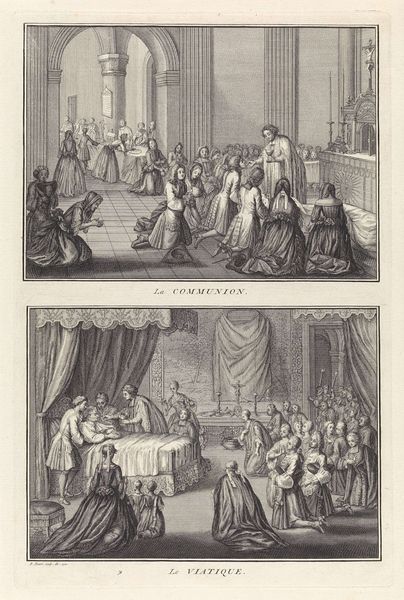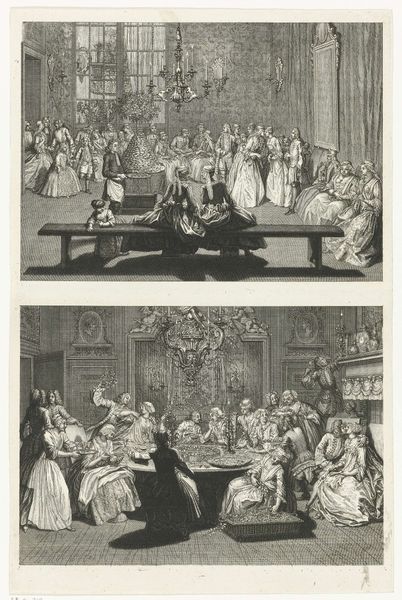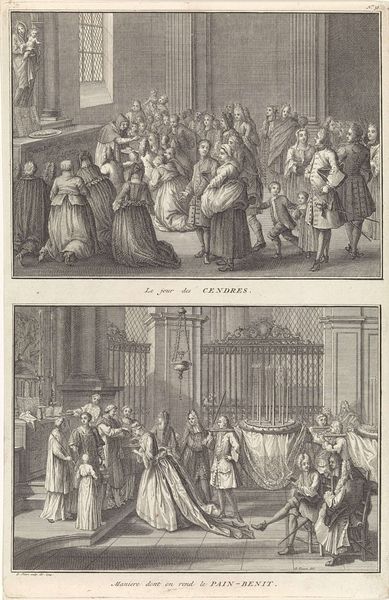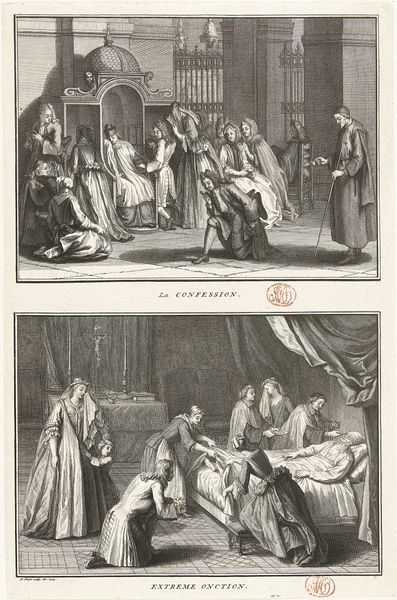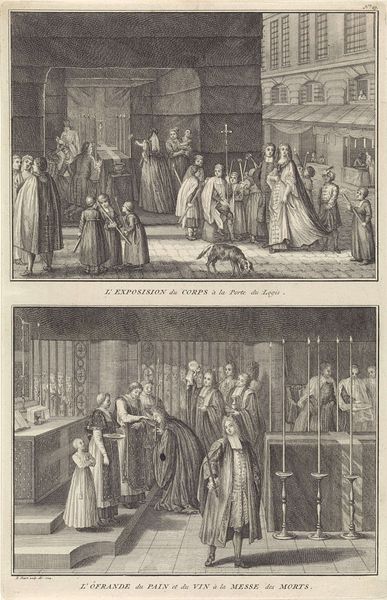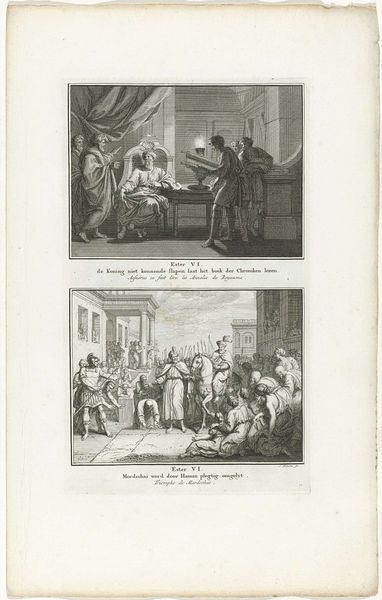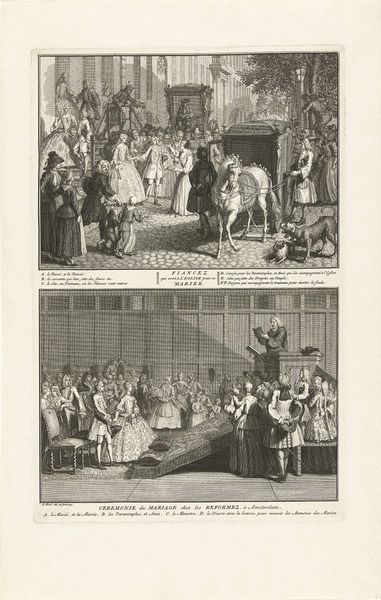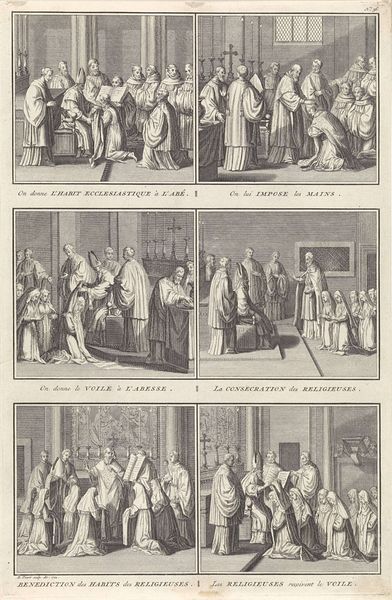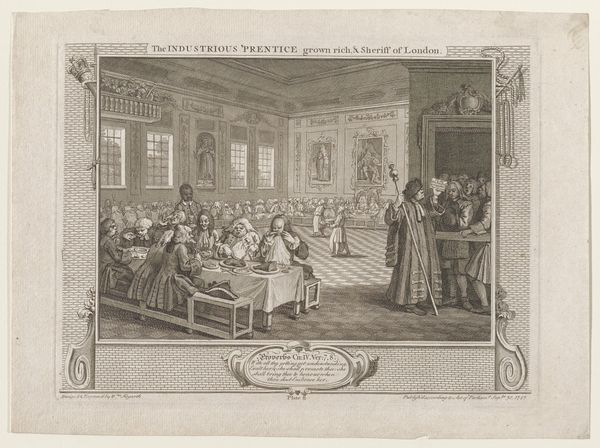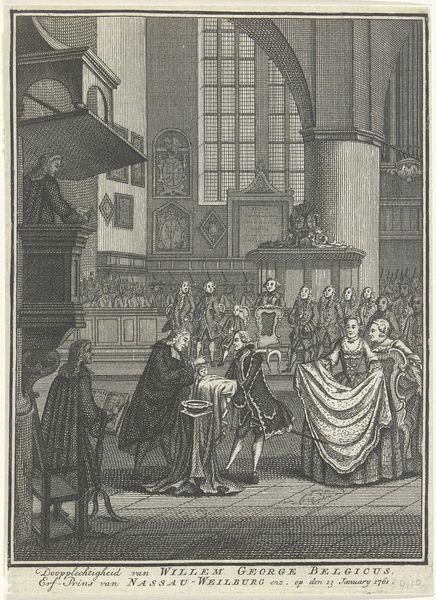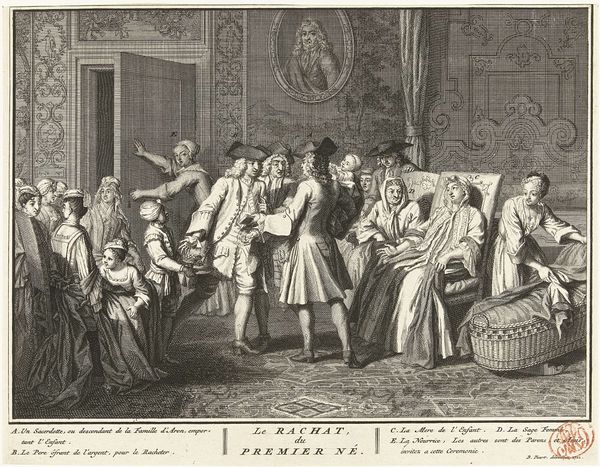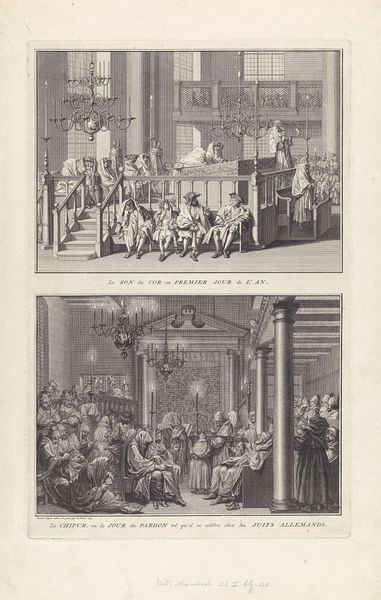
Katholieke doop door een priester / Katholieke doop door een vroedvrouw 1722 - 1727
0:00
0:00
print, engraving
#
baroque
# print
#
genre-painting
#
history-painting
#
engraving
Dimensions: height 331 mm, width 217 mm
Copyright: Rijks Museum: Open Domain
Editor: Here we have Bernard Picart's engraving, "Katholieke doop door een priester / Katholieke doop door een vroedvrouw" made between 1722 and 1727. What strikes me is how it depicts two different baptism scenarios in a single image – one in a grand church and the other seemingly in a private home. How do you interpret this juxtaposition? Curator: Well, seeing these two baptismal scenes side-by-side gives us insight into the social and religious landscape of the 18th century. Notice how the top panel portrays a public, official ceremony, likely involving wealthier members of society given the setting. What kind of power dynamics are suggested here? Editor: I guess it implies a formal acceptance into the Church and perhaps reflects the social status of the family? Curator: Exactly! Now, contrast that with the scene below, the home baptism. This setting and the presence of a midwife suggests a more private, perhaps urgent, affair. Consider why a midwife might be performing a baptism. Editor: Maybe there were concerns about the baby's survival? If a child was in danger of dying, immediate baptism, even by a lay person, was permissible? Curator: Precisely. Picart highlights the institutional versus the personal. What does it suggest about access to religious rites? It is a commentary on who gets access to formal religious ceremonies and who relies on informal, domestic practices? Editor: So it's not just about religion, but also about social class and accessibility. It highlights the contrasting experiences of different social strata. Curator: Exactly. These images point towards how religious practices were often interwoven with social hierarchies. Picart's work allows us to consider how institutions wield power and influence everyday life, especially during pivotal moments such as birth. Editor: That's a powerful insight! I didn’t initially consider how social status could dictate even something as fundamental as a religious ceremony. Thank you!
Comments
No comments
Be the first to comment and join the conversation on the ultimate creative platform.
